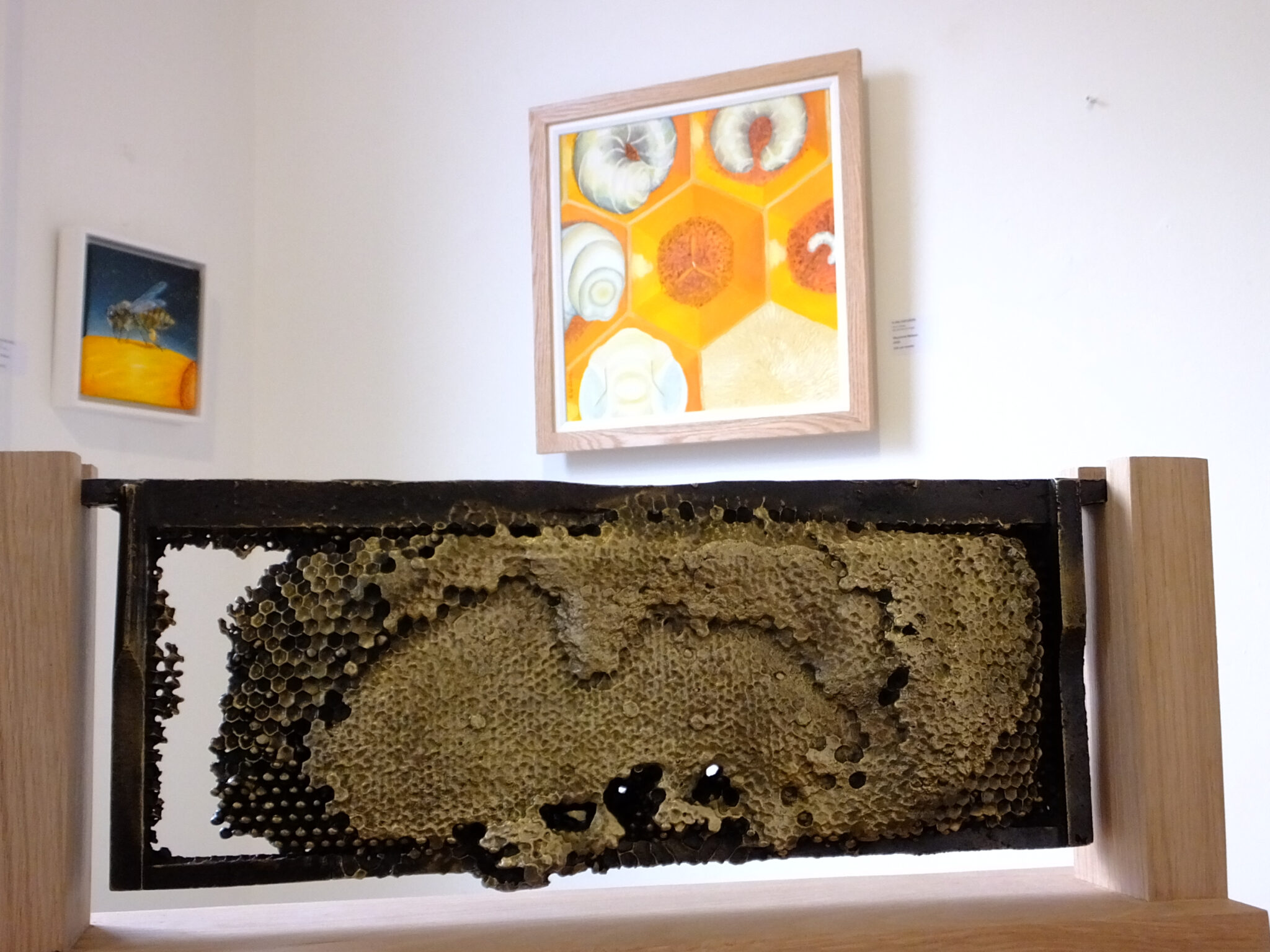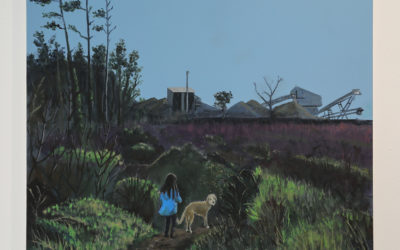First published in the VAN (Visual Artists News Sheet) 15 March 2023.
Ann McVeigh and Ken Bartley, the team behind ArtisAnn Gallery, are no strangers to the NI Science Festival or indeed science for that matter – Ken has a degree in physics. Every February sees them contributing a welcome contemporary art component to the festival and, with the inclusion of Raymond Watson’s solo show ‘Apis Mellifera’, this year is no exception. As I arrive at Watson’s show, Ann asks someone just leaving if she listened to the recordings of the bees. “No, I’m scared of bees!” she replies. Everyone laughs and I think to myself, as I ascend the stairs to the first-floor gallery space, “well, I’m not scared of bees…”
Taking its title from the Latin name for the European honeybee, the show focuses on the activity of beekeeping and comprises two audio pieces, nine oil paintings, and three bronze castings. Watson is perhaps most associated with the latter medium ever since the initiation in the early 2000s of his ongoing body of work ‘Hands of History’, in which the artist casts in bronze the hands of key figures involved in the Peace Process.
I begin with the paintings. Each one is self-contained, vibrant and centres on a single aspect of beekeeping. They provoke an immediate sense of nostalgia; something about their style and clarity of vision takes me back to the encyclopaedia illustrations I would pore over as a child. The visual affinity with science imagery is fitting, even beyond the show’s inclusion in the science festival. The paintings have a schematic quality in their drive to illustrate and explain ideas and phenomena, especially ones which cannot be seen with the naked eye. For example, The Tree Hive shows a swarm of bees that have formed a home inside a hollow tree – a natural habitat in contrast to the beekeeper’s functional construction depicted in The Blue Hive. The bark of the tree has been ‘cut away’ by the artist, seemingly seared clean off with edges still glowing red. It enables us to ‘see’ inside the tree’s hollow trunk where worker bees crowd around the queen, like seeds dotted about the core of some exotic fruit sliced open.
In The Dances various shapes are scattered over an intense orange background – some like raised insect wings, others like cross-sections of apples or simple concentric circles. They show the pattern of steps that bees perform to communicate to the rest of the hive where the best nectar pickings are to be found. Again, Watson illustrates something which cannot be seen; these dances take place in the darkness of the hive, the visual pattern of no concern to the bees who interpret solely the rhythm and vibrations. Above the ‘dancefloor’, in the upper section of the canvas, is a pattern of lines and dots – it’s like a dance-step diagram but is actually the molecular structure of honey. In the Cell is yet another example, here illustrating stages in the bee life cycle from egg to larva, each step depicted neatly in sequence.
The stars of the show are the three bronzes – The Brood Frame, Three Queen Brood, and Super Frame – frames from working beehives which Watson has cast in bronze. The oblong pieces dangle from wooden supports, suspended much as they would be in the hive, like filing cabinet dividers. Watson is rightly proud of the process he has devised to turn these extraordinarily delicate objects into solid artefacts. Hundreds of honeycombed cells are visible on both sides of each frame, from queen cup cells to worker and drone cells to those brimming over with honey. Yet each has its own character, from the almost fractal energy of the first, to the softer topographical undulations of the second brood frame, and to the smallest yet most voluminous of the three – the beekeeper’s ‘super’ frame from which honey is harvested. Colours range from a rich, warm brown to a shimmering polished gold. They provoke questions about the co-authorship of their creation, the human-animal relationships at play, and the organic-industrial nature of this 10,000-year-old activity. Even to the non-apiculturist’s eye, the works are intricately fascinating and beautiful.
The two audio pieces, Bee Life and The Swarm (of five and four minutes in duration respectively) are short immersive journeys: the former a droning bee sound from which manipulated samples gradually emerge and coalesce into a melody; the latter more abstract, moving from birdsong to a single bee, to innumerable bees and returning to birdsong at its conclusion. On leaving the gallery, I pop my helmet on and, while unlocking my bicycle, something brushes my cheek – I flinch, jerking my hand to my face. It’s not some stray February bee – just an unfastened strap tickling my cheek and making me question my earlier assertion…
Jonathan Brennan is an artist based in Belfast. Critique | Raymond Watson ‘Apis Mellifera: The Honey Bee’




